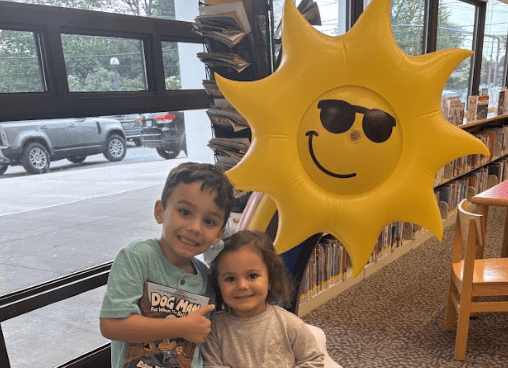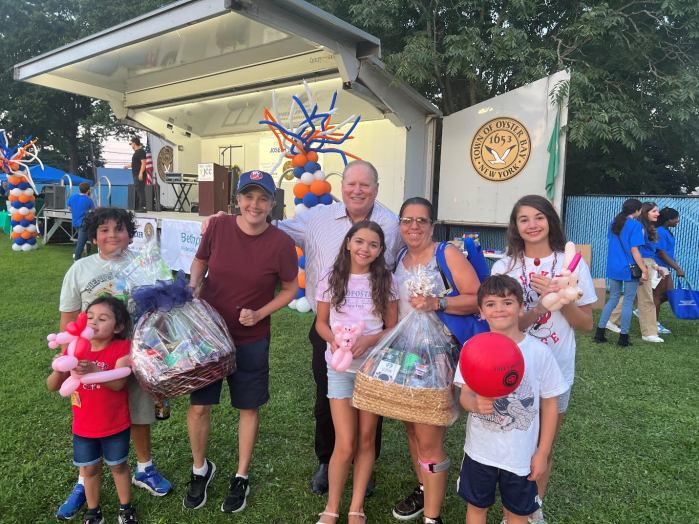In 2012, Superstorm Sandy wrenched feelings of safety and control out of the lives of New Yorkers, but a new program instituted recently by Gov. Andrew Cuomo aims to take that dreaded sense of helplessness and replace it with empowerment.

First Lt. Robert McCoy of the Air National Guard was one of the hosts of the Citizen Preparedness Corps at the Syosset Public Library, and noted that this new program is designed to give citizens the know-how to get by should another catastrophe befall the region.
“This is an initiative from Governor Cuomo that started in March of 2014, and this was part of an effort that was formed after Sandy just to get information out,” he said. “He heard the message that people want training on how to be prepared for natural disasters. So, the Governor teamed up with the Department of Homeland Security and Emergency Services and the National Guard, and they put this training together.”
According to McCoy, multiple Citizen Preparedness events are held in New York State each week to meet Cuomo’s goal of 100,000 trained residents by its completion. At these events, survival tips and strategies are discussed covering three main types of disaster scenarios: natural, man-made and technological.
“Natural disasters include things like earthquakes, snow storms, hurricanes, coastal flooding and disease pandemics” he said. “Man-made would consist of terrorist attacks such as what happened on 9/11, a nuclear power plant shutting down and so on. Technological disasters would cover things like blackouts, cyber-attacks upon infrastructure, communication outages and things along those lines.”
First Lt. Taalib Boyd of the Air National Guard handled the bulk of the program, which consisted of a lecture and Q&A session.
“Concerning an emergency, it’s not a matter of if it will happen, but when it will happen…at some point in your lifetime, you will need to use the information we are discussing here today,” he said. “Compared to much of the nation, New York has a higher overall risk level due to several factors…one, we have a large population; two, New York is very symbolic. If you hurt New York, you can hurt the whole nation; and three, we have a lot of coastal area open to flash flooding and storms. There are a number of risk factors, and people need to be ready for them all.”
The primary focus of each event centers on the construction of an “emergency survival kit” (or a “Go Kit”), individualized for the needs of each family member in your household, should the worst occur. The kit should take the form of a sturdy backpack stocked to capacity with enough non-perishable food, water, medication and other consumables to last at least seven to 10 days.
It is also recommended that citizens rotate food items in their kit on an annual basis to ensure the supplies are fresh and usable. Also, print out a list of telephone contacts in case there is no way to recharge a cell phone.
“Our big thing is what a family can do for themselves first, because a lot of times, first responders might be tied up elsewhere,” said McCoy. “If you call 911 during a major disaster, sometimes it could take an hour, or—in a worst-case scenario, days—for them to get to you. So, families need to put together a plan on what to do in case of emergencies.”
“Most of the things we talk about here are just common sense,” McCoy added. “We just don’t think of them often in our day-to-day lives.”
Pam Martin, head of adult programming at the Syosset Library, said that she thought their participation in the Citizen Preparedness program was a great idea since the library had become a sort of central community hub during Superstorm Sandy.
“During Sandy, much of the surrounding neighborhood had lost power for over a week while we didn’t. We did our best to be there for them,” she said. “We had powerstrips out everywhere for people to use to recharge their phones and computers, and we had many people coming here just to get warm, get information, eat something and get away from their difficulties for a while. Hopefully there will be no more emergencies like that, but in the even that there is, I thought this program would be great information for people.”
Ruth Holtzmann is one of the locals that attended the Citizen Preparedness event. She noted that the information would serve well to safeguard herself and her family in case calamity strikes.
“Before Sandy hit, I never thought that anything of that scope would ever hit this area,” she said. “And while I feel that chances are slim of something like that happening again anytime soon, I figured it would be for the best to find out how to best ready myself to that I’d know what to do just in case. This program was excellent in that regard.”
To find out more information, visit www.prepare.ny.gov.
In addition, residents can visit www.nyalert.gov to sign up for emergency notifications.



































